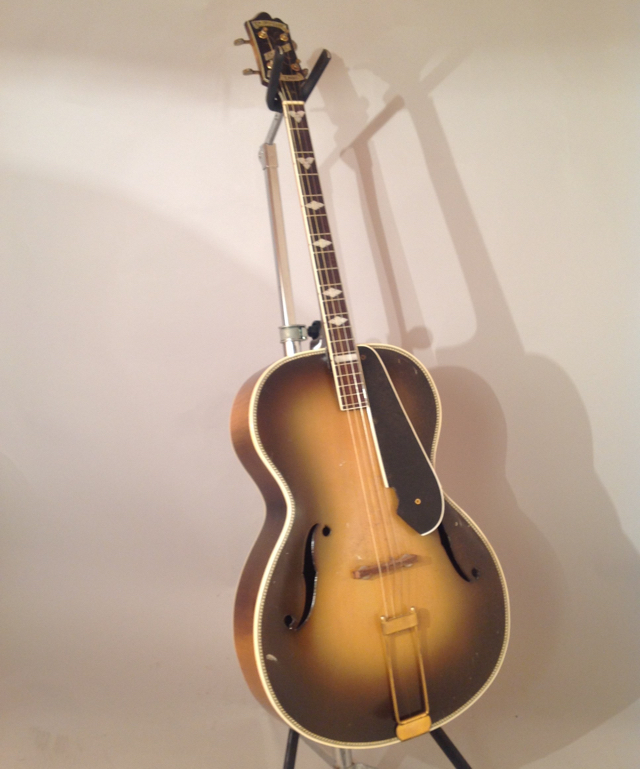
Close-up #23: 1931 Empire Tenor
SN 5137
When Epiphone launched their Masterbilt series of archtop guitars in
1931, most of the 6-string models had a 4-string tenor guitar companion.
The Epiphone Banjo Corporation, as the company was still named until
1935, obviously knew about the changing needs of their banjo clientele:
Tenor guitars offered 4-string players the opportunity to switch to
guitar without relearning the fretboard. This fancy Masterbilt tenor guitar was sold a while ago by vintage instrument dealer Larry Wexer (no affiliation). The asymmetric headstock sports pearl banners with the model name "Empire" across the center.
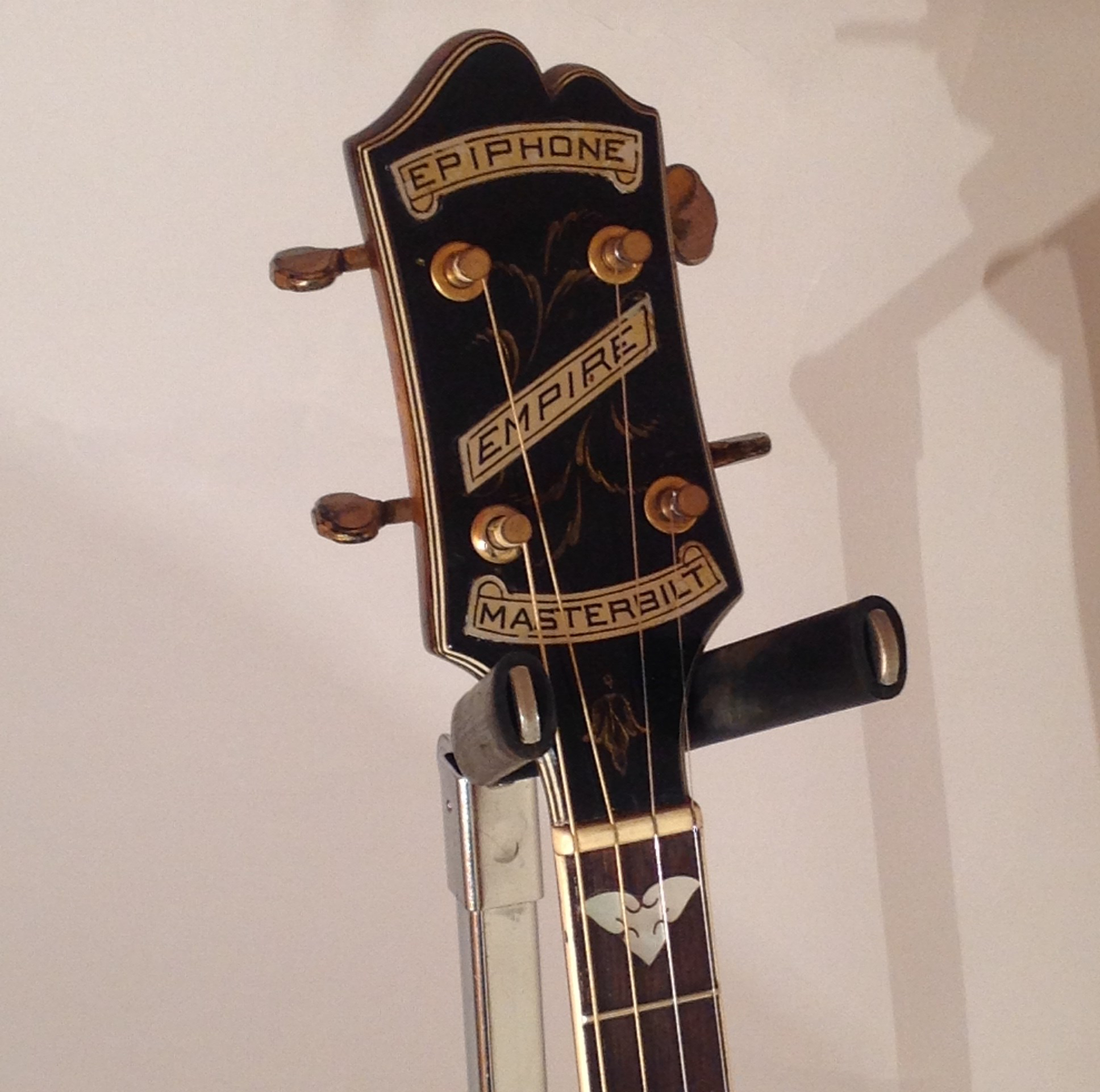
The serial number "5137" is stamped on the inside back, with no sign of any label next to it. We assume that this very low SN indicates a 1931 manufacturing year.
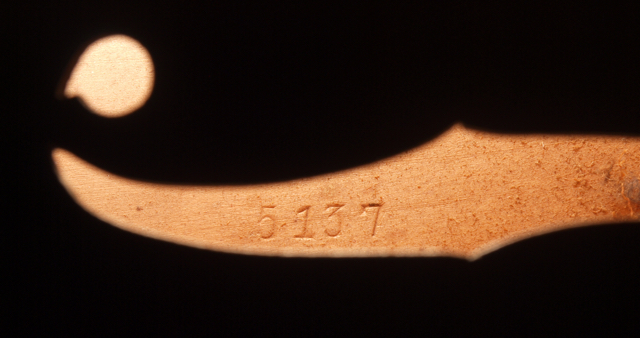
The 1932 Epiphone catalog listed the Empire as their top tenor model "similar in finish and appearance to the De Luxe Guitar". Indeed, the fretboard inlays, body trim and gold plated parts are that of the 6-string top model.
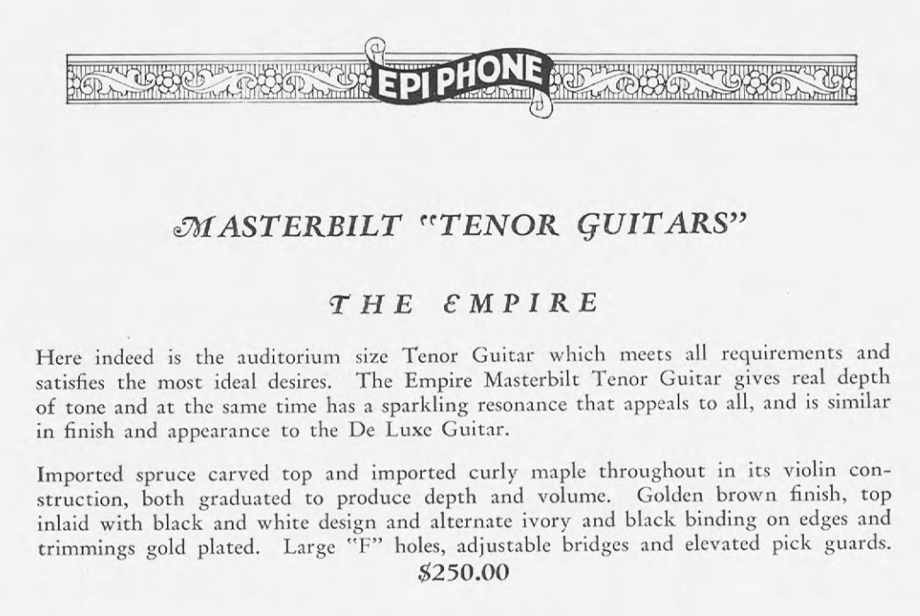
Interestingly, the catalog pointed out that the spruce and maple used on this model was "imported" – obviously suggesting this being "better" than domestic woods ... The top finish of this example has the semi-opaque quality seen on many pre-1935 Epis.
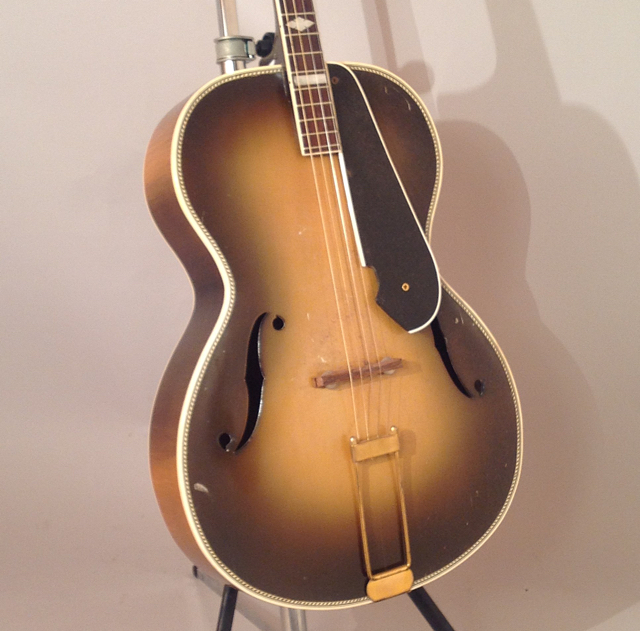
Apart from the number of strings, another feature is different from the DeLuxe – the body size: But while the 1932 catalog specified "auditorium size" (=15 1/2" wide) for the Empire, this example measures only 13 5/8" across the top – the small "concert size" of the low-end Olympic and Zenith guitars! Also the earliest Hollywood tenor guitars (styled similar to the Triumph) have this smaller than cataloged body size.
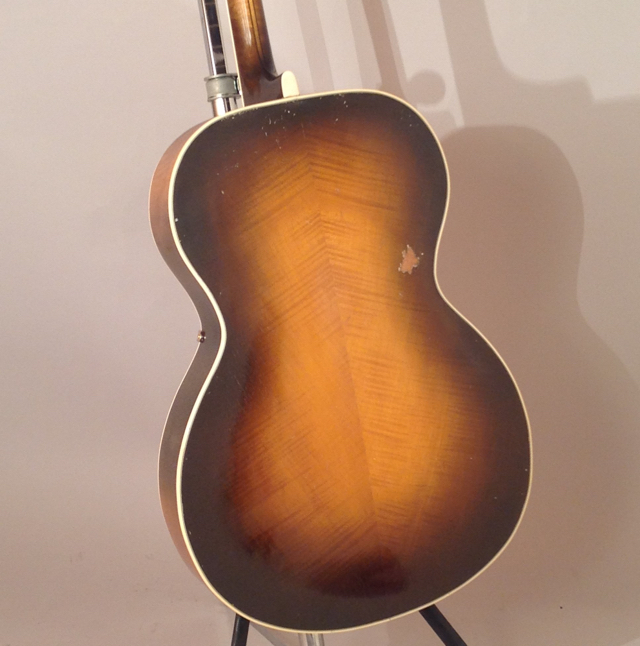
The present owner of the instrument sent us some interesting detail photos. The back of the headstock sports a banjo-like volute or "hand stop" – an exclusive feature of the Masterbilt 6- and 4-string top model until 1935. The tuners are gold-plated Grover G-98 with scalloped buttons: This variety with clipped plate ends and riveted gear (no screw) is typically seen on Epiphone DeLuxe examples of the 1934–35 period.
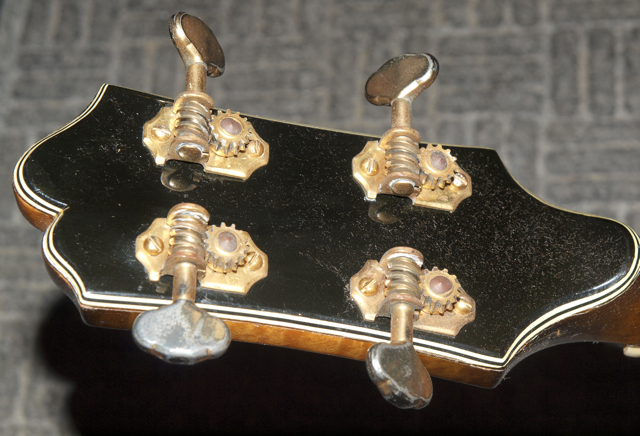
The (damaged) pickguard has the pre-1935 "straight" shape – interestingly with a screwed neck attachment (like on this Olympic) that was not standard before 1934 (see picture below). The earliest Epiphone pickguards were attached to the side of the neck with two thin pins (like on this Zenith) – but no sign of any pin holes for an earlier guard on this Empire's neck.
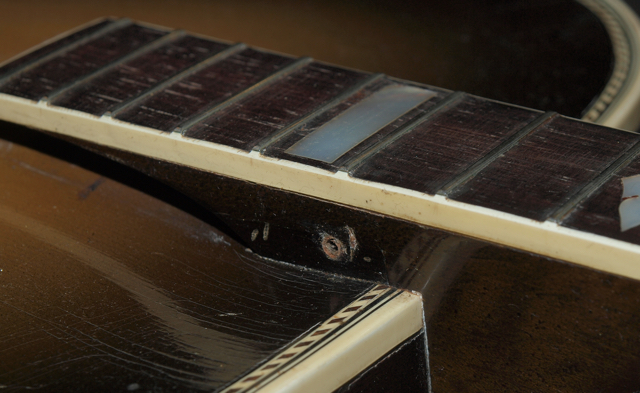
The removed tailpiece reveals some plugged holes for screws and endpin ...
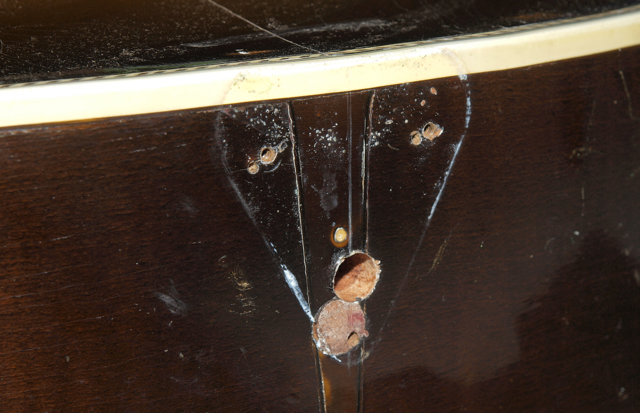
... indicating that the gold plated 4-string trapeze tailpiece with large mounting plate and endpin hole (pictured below right) is obviously a later replacement. Until 1932 Epiphone used "reverse" trapeze tailpieces with shorter mounting plates not surrounding the endpin, like the example pictured below left.
So what's the story here? Possibly this tiny 1931 Empire Tenor – the only one of its kind we are aware of – didn't leave the Epiphone factory with these tuners, pickguard (and tailpiece) before 1934.
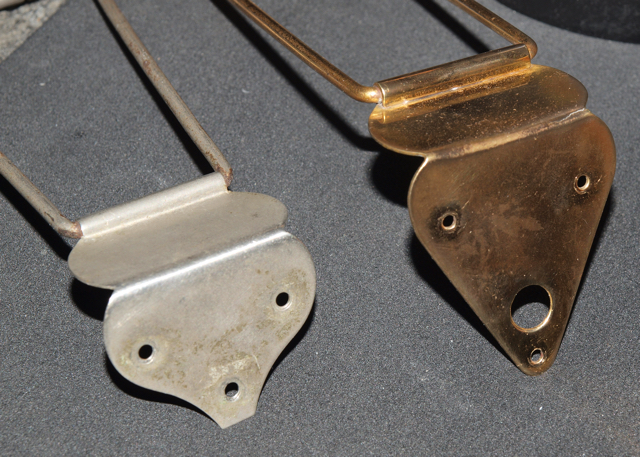
(Nov 19, 2016)